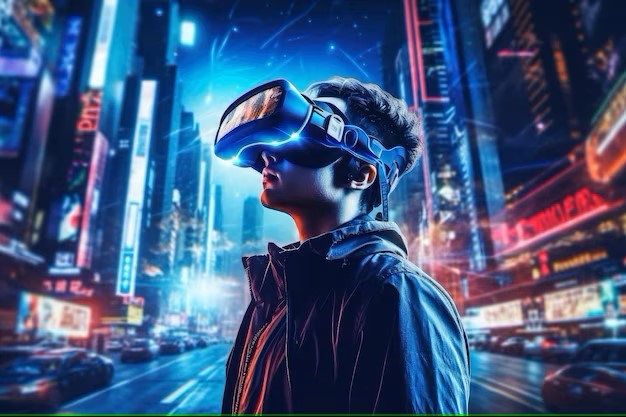
What is virtual reality
Virtual reality (VR) is a technology that allows users to immerse themselves in an artificial, computer-generated environment and interact with it in real-time. VR can provide an immersive and interactive experience that enables users to visualize and understand complex concepts, simulate human experiences, and explore virtual world
How it works
1.Rendering the Environment
3D Modeling and Animation
The virtual environment is created using 3D modeling software. Objects, characters, and landscapes are modeled, textured, and animated.
Real-Time Rendering
The VR engine renders these models in real-time, creating a stereoscopic image (a separate image for each eye) to create depth perception. The images are rendered at a high frame rate (usually 90-120 frames per second) to maintain a smooth experience.
2.Head Tracking
Sensors
Gyroscopes and accelerometers in the HMD detect the orientation and movement of the user’s head.
Positional Tracking
External sensors or cameras track the user’s position in the room.
Data Processing
This data is processed in real-time to adjust the rendered images, so they match the user’s perspective and movements. This creates the illusion of being inside the virtual environment.
3.Interaction
Input Devices
Controllers, gloves, or other input devices track the user’s hand and body movements.

Haptic Feedback
Some devices provide haptic feedback (vibrations or resistance) to simulate the sense of touch.
Collision Detection and Response
The VR engine detects collisions between virtual objects and the user’s virtual representation, enabling interaction with the environment.
4.Audio
3D Spatial Audio
Audio is rendered to simulate spatial hearing, giving cues about the direction and distance of sounds.
Head-Related Transfer Function (HRTF)
This simulates how sound waves interact with the head and ears, enhancing the realism of the audio experience.
Applications
- Education and Training
Simulated Training: VR provides realistic training environments for fields like aviation, military, and healthcare, allowing trainees to practice in safe, controlled settings.
Virtual Classrooms: VR enables immersive learning experiences, allowing students to explore historical sites, conduct virtual science experiments, or learn in interactive 3D environments.
Medical Training: Medical students and professionals use VR to practice surgeries, procedures, and diagnostics without risk to patients.
- Entertainment and Gaming
Immersive Gaming: VR offers highly immersive gaming experiences, placing players inside the game world.
Virtual Theme Parks: VR enhances theme park attractions, providing virtual roller coaster rides or interactive exhibits.
Virtual Concerts and Events: VR allows users to attend concerts, sports events, and other live performances from the comfort of their homes.
- Engineering and Design
3D Modeling and Simulation: Engineers and designers create and manipulate 3D models in VR, allowing for precise design and testing.
Virtual Walkthroughs: VR enables virtual walkthroughs of buildings, bridges, and other structures, aiding in design review and client presentations.
Training and Safety: VR simulates dangerous scenarios for training purposes, improving safety and preparedness.
Why NGXP Technologies????

Expertise in Digital Transformation
we specializes in IT digital transformation, leveraging over 20 years of industry experience. Their focus on innovative digital solutions ensures that clients receive cutting-edge VR technologies that can enhance business operations and user experiences.
Comprehensive VR Solutions
NGXP Technologies provides a range of immersive technologies, including VR, AR, MR, and XR, which can be tailored to meet specific business needs. This versatility allows organizations to integrate VR into various applications, from training and education to marketing and product development.
Commitment to Innovation
With a commitment to continuous improvement and innovation, NGXP Technologies stays ahead of the curve in the rapidly evolving VR landscape. This focus on innovation means clients can expect access to the latest advancements and features in VR technology.
Tailored Support and Guidance
NGXP Technologies emphasizes providing clear and transparent assistance, helping businesses navigate the complexities of implementing VR solutions. Their approach ensures that clients receive personalized support without hidden costs, fostering a collaborative environment for success.
Conclusion
Virtual Reality revolutionizes learning and training with immersive, interactive experiences. It offers realistic simulations for aviation, military, and healthcare, as well as virtual classrooms and risk-free medical training. As technology advances, VR’s applications will expand, providing innovative solutions and new opportunities. Embracing VR leads to more effective, engaging, and safe experiences, blurring the boundaries between virtual and real worlds.

